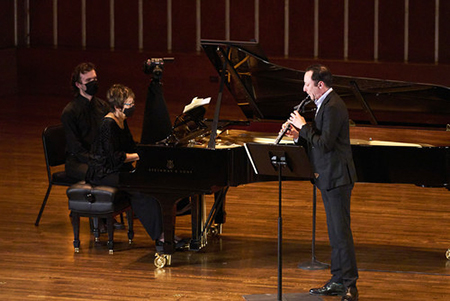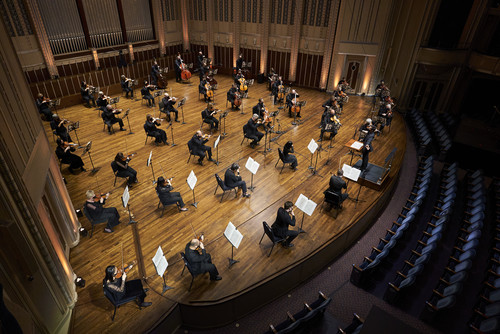by Daniel Hathaway

In the tenth episode of In Focus, which debuted on May 6, The Cleveland Orchestra has revived that tradition on a small scale, programming an arrangement for oboe and piano of a Ravel solo piano piece and following it by a set of variations for string orchestra — a lovely combination of varied works that makes a satisfying, one-hour program.
Principal oboe Frank Rosenwein joins pianist Carolyn Warner, who usually operates from the second violin section, for an expressive performance of David Walter’s reworking of Maurice Ravel’s piano Sonatine, a piece Ravel originally submitted anonymously for a magazine competition.
Walter, who was appointed to the oboe and chamber music faculty of the Paris Conservatory at the unheard-of age of 29, has taught at London’s Guildhall School since 1997 and has more than 230 arrangements to his credit. He knows what he’s doing, and the new Sonatine sounds as though it was originally intended for the oboe.
Much of it lies high in the instrument’s register, but that’s no problem for Rosenwein, whose tone blooms even in the stratosphere, and whose intonation in the upper reaches remains flawless.

Each of the ten variations on a theme from the second of Bridge’s Three Idylls embodies an important personal trait, and additionally, Britten incorporated parodies of various musical forms like the Viennese Waltz and the Funeral March into his piece. In its easy handling of musical materials, it will remind the listener of Britten’s “Purcell Variations,” a.k.a. The Young Person’s Guide to the Orchestra — it even ends with a fugue that nobly restates Bridge’s theme in the same way that Britten recapitulates Purcell’s.

Once again, audio and video production values are superb, although quick and frequent switching between cameras can make the viewer a bit nervous. And for some reason, the color temperature changes when one of the cameras pans out for wide shots.
Photos by Roger Mastroianni courtesy of The Cleveland Orchestra.
Published on ClevelandClassical.com May 12, 2021.
Click here for a printable copy of this article



